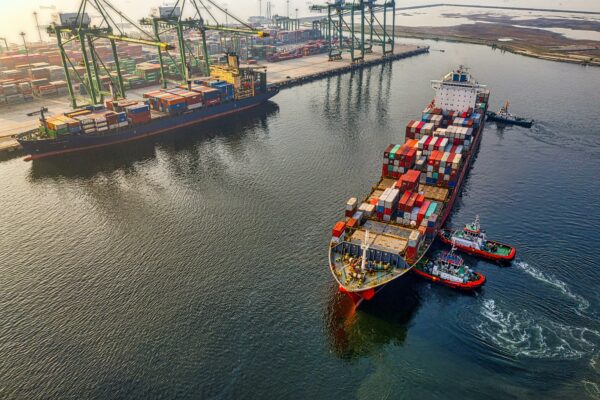Unconstrained demand: How AI will modernise inventory forecasting
Dec 15, 2023
Scroll to find out more
Dec 15, 2023
Scroll to find out more

For supply chain managers, everything starts with the demand. But the actual process for forecasting and gauging demand has long been as much an art as a science. But that could be about to change.
As Nicolas Vandeput, CEO and Founder of inventory optimisation firm SupChains, put it on our podcast Freight to the Point, “The better you are at predicting the future, the better other people in your company can make decisions.” And as digital data and AI analysis take a larger role in the way businesses and shippers track, predict and meet demand, this idea of predicting the future is becoming an ever-more realistic prospect.
The ability to create more accurate, agile and granular forecasts has the potential to radically improve the way retailers approach inventory management and supply chain planning, particularly when it comes to fluctuating demand and market disruption. With a true picture of demand, shippers will have the ability to fine tune every element of their supply chain, based on real-time inputs.
Accurate demand forecasting requires a wide array of diverse data inputs. Starting with SKU-level sales data and pricing records, compared with inventory levels and supply constraints and filtered through wider macroeconomic and market level indicators, the more data available, the more accurate predictions can be. But sourcing such information at the right level of detail, recency and completeness can be a significant challenge.
This rests on what Vendeput calls ‘unconstrained demand’ data – based on what clients would want in an ideal world. “You really want to think, ‘How many products, and what type of products, and when do my clients want my products?’” he says.
“When we assess accuracy, we should really try only to do that based on the real requests from your client and the market, versus comparing your forecast to what you actually delivered, which might be impacted by any kind of shortage.”
By removing distortions, you create a reliable baseline for demand that can be filtered through the other relevant considerations, and compared with the actual performance of the supply chain processes.
With a view of demand forecasting based not around tracking existing limitations but meeting the true value of the market, shippers can implement a more holistic form of KPI tracking in relation to a reliable baseline and build it into the structure and incentives of the business.
Vendeput focuses on the Forecast Value Added (FVA) framework, which tracks forecast accuracy at each step of the supply chain, from initial statistical models to revisions by teams like sales, to determine whether changes add or diminish value.
“Once you get your baseline forecast out of this software, you might start with an accuracy of, let’s say, 60%…And then you have maybe a few demand planners reviewing that and they increase the accuracy to 65%. That’s amazing. That’s great. And then they give it to the sales team. The sales team change it, but the accuracy drops to maybe 62% now.” he explains.
“As soon as you start measuring this person by person, or team by team, you can really start to go and have a discussion with these people because you can really identify who is biased.”
With AI and machine learning becoming common topics of conversation within the industry and without, the pace of change in demand forecasting may well be about to accelerate.
While traditional statistical models yield incremental improvements year over year, machine learning has advanced rapidly, with Vandeput noting that, year on year, machine learning is faster, becoming easier to use and generating more accurate outputs.
For retailers that are sitting on huge volumes of existing historic supply and demand data, this is a huge opportunity. “If you’re a business with a large amount of data, there is no doubt that if you access the right machine learning capabilities, you can reduce your forecast error by 20% or 25%,” says Vandeput.
With margins, demand and schedules still uncertain for many businesses, accurate demand forecasting and inventory optimisation remains central to supply chain success.
Zencargo works with leading retailers around the world to provide real-time order and shipment tracking across networks.
To find out more about how Zencargo’s digital freight forwarding experts and technology can support your demand forecasting and inventory strategy, get in touch today.

If you’re looking for a partner who can support you through 2024, and beyond, w...

Last updated: Monday 3pm BST On Friday 19th July, an unprecedented global issue...
